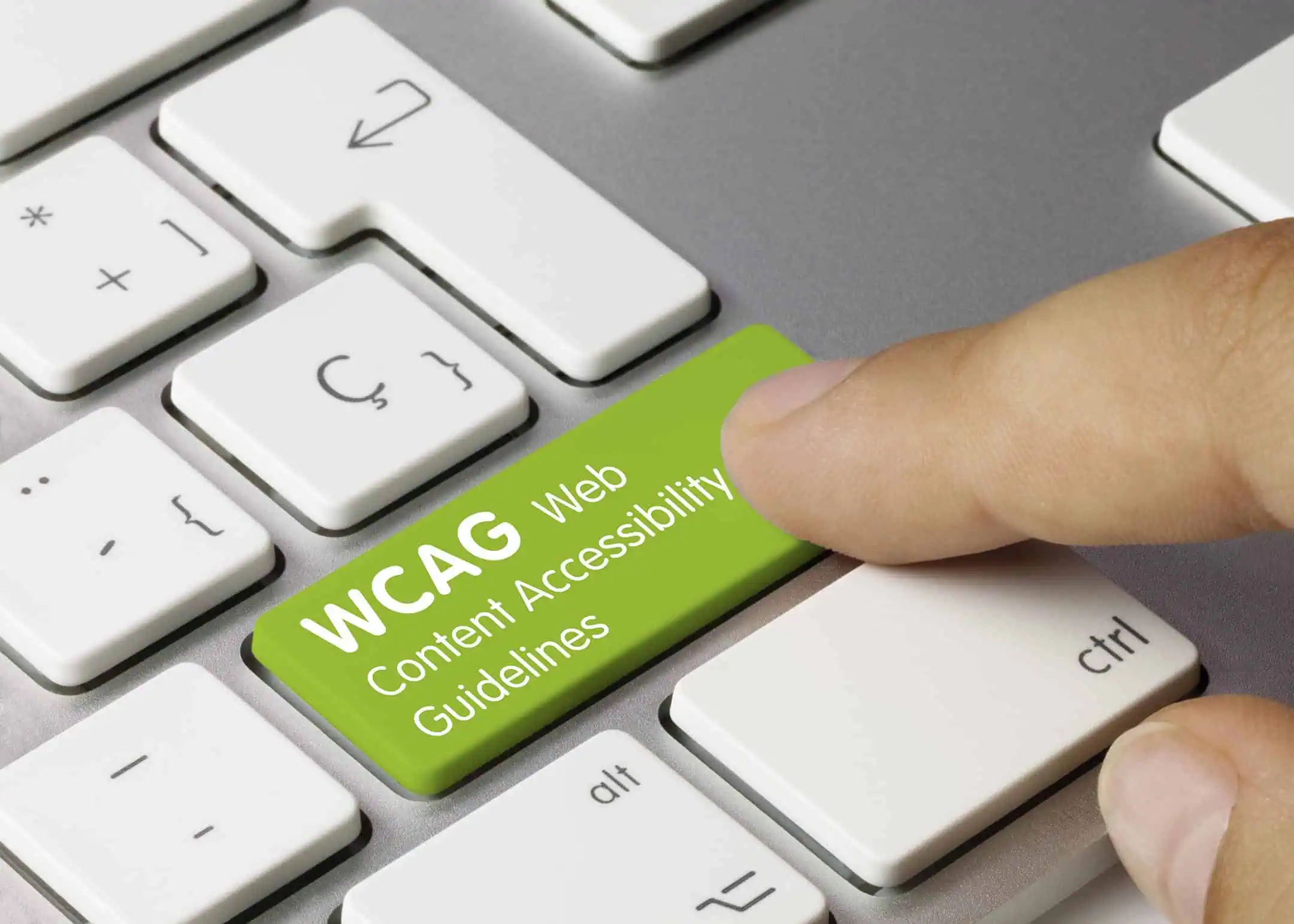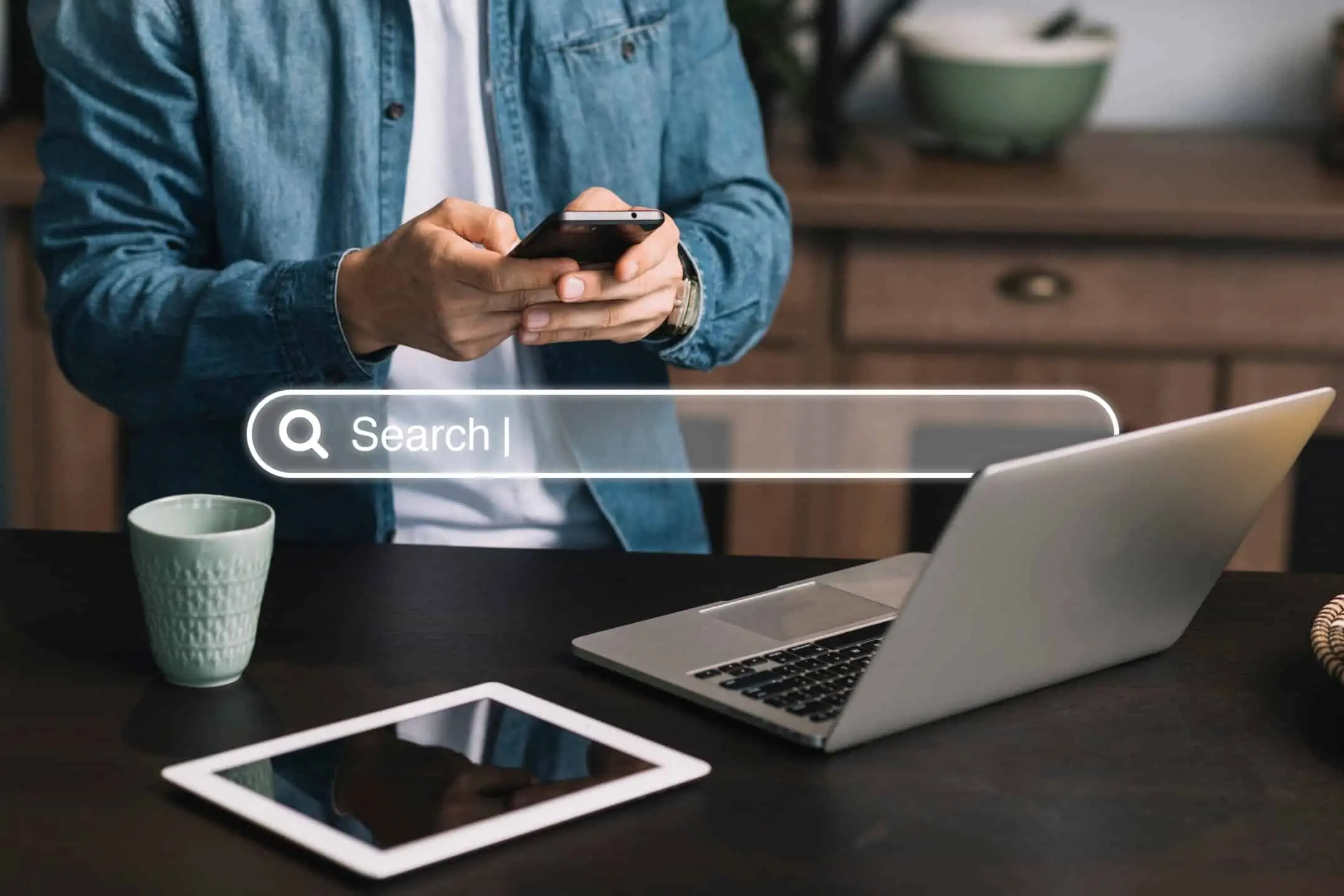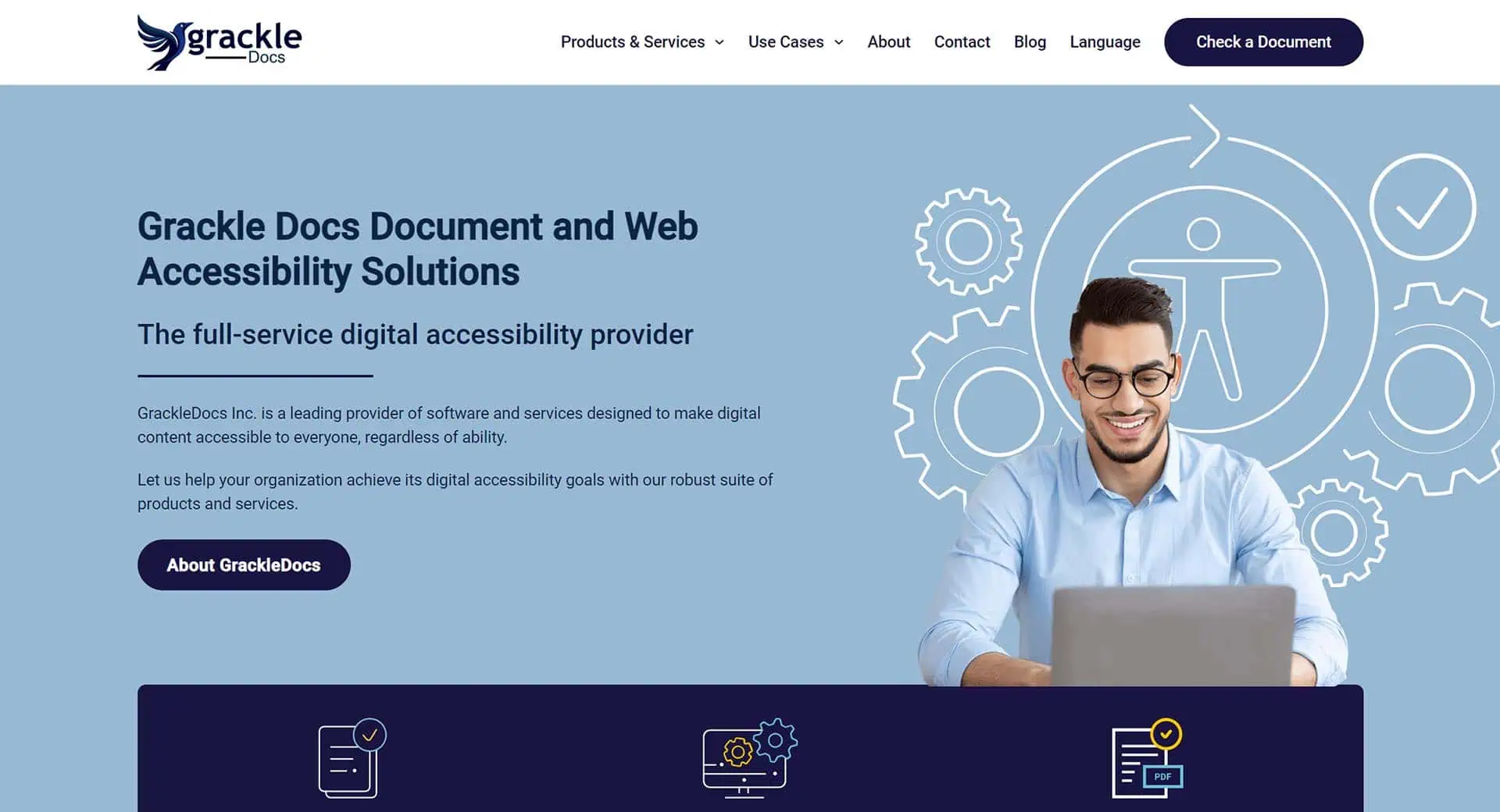Accessible design refers to the practice of creating websites and digital content that can be used by everyone, including individuals with disabilities. This involves considering various aspects of accessibility, such as visual, auditory, physical, and cognitive impairments. Accessible design ensures that all users, regardless of their abilities, can navigate, understand, and interact with your site effectively.
Designing for accessibility is crucial not only because it is a legal and ethical responsibility but also because it enhances the overall user experience. When a website is accessible, it becomes more user-friendly for everyone, including those without disabilities. Features like clear navigation, readable text, and logical content structure benefit all users, making your site easier to use and more engaging.
Moreover, accessible design can lead to improved search engine optimisation (SEO). Search engines favour websites that provide a positive user experience, and accessibility features like alt text for images and proper heading structures can boost your SEO efforts. Additionally, designing for accessibility can expand your audience, reaching potential customers who might otherwise be excluded from accessing your content.
Incorporating accessible design principles not only fulfils a moral obligation but also offers significant advantages in terms of usability, SEO, and audience reach. For more detailed guidelines, refer to our article on accessibility standards.

Understanding Accessibility in Web Design
Definition of Web Accessibility
Web accessibility refers to the inclusive practice of ensuring websites and digital content are usable by all individuals, regardless of their abilities or disabilities. This includes designing and developing sites that accommodate a wide range of impairments, such as visual, auditory, physical, speech, cognitive, language, learning, and neurological disabilities. The goal is to create a web environment where everyone can perceive, understand, navigate, and interact with the content.
Importance of Complying with International Standards such as WCAG
Complying with international standards like the Web Content Accessibility Guidelines (WCAG) is crucial for achieving web accessibility. WCAG provides a comprehensive set of guidelines designed to make web content more accessible to people with disabilities. These guidelines are organised under four principles: Perceivable, Operable, Understandable, and Robust (POUR). Each principle contains specific criteria that web developers and designers should follow to ensure their content meets accessibility standards.
Adhering to WCAG not only helps in creating an inclusive web experience but also protects businesses from legal risks associated with non-compliance. Many countries have enacted laws and regulations that mandate web accessibility, and failing to comply can result in legal repercussions. Moreover, accessible websites tend to perform better in terms of SEO and user engagement, as they offer a better overall user experience.
Incorporating WCAG guidelines into your web design process is essential for building sites that are both legally compliant and user-friendly. By prioritising accessibility, you can enhance the usability of your website for all users, while also supporting a more inclusive digital world.

The Four Principles of Accessibility: POUR
Understanding the POUR principles – Perceivable, Operable, Understandable, and Robust – ensures your website is accessible and user-friendly for everyone, including those with disabilities.
Perceivable Information
The principle of perceivable information emphasises the importance of presenting information in ways that all users can perceive. This means that content should be available to users through various sensory modalities – such as sight, hearing, and touch. For example, providing text alternatives for non-text content (like images and videos), enabling screen readers to interpret visual information, and using sufficient contrast to ensure text is readable. By ensuring that information is perceivable, you cater to users with diverse needs, enhancing their overall experience on your site.
Operable User Interface
The operable principle focuses on making user interface components and navigation accessible to all users. This means ensuring that all functionalities are operable through different input methods, such as keyboard navigation for users who cannot use a mouse. Interactive elements like buttons, links, and form controls should be easily reachable and usable. Additionally, incorporating clear navigation structures and providing sufficient time for users to complete tasks are critical. An operable interface enables users to navigate and interact with the website efficiently, regardless of their physical abilities.
Understandable Information & User Interface
This principle ensures that information and the operation of the user interface are understandable. Text content should be readable and comprehensible, using simple language and clear instructions. Consistency in navigation and design helps users predict and understand how to interact with your site. Providing helpful error messages and guidance when users encounter issues also contributes to a more understandable interface. Making content and interfaces understandable reduces user frustration and improves overall accessibility.
Robust Content and Reliable Interpretation
The robust principle aims to ensure that content can be interpreted reliably by a wide variety of user agents, including assistive technologies. This involves using well-structured HTML, adhering to web standards, and ensuring compatibility with current and future technologies. By using semantic markup and ARIA (Accessible Rich Internet Applications) attributes, developers can create content that is accessible to screen readers and other assistive devices. Ensuring robustness in your content allows it to be adaptable and accessible across different devices and platforms, providing a consistent experience for all users.
By adhering to the POUR principles – Perceivable, Operable, Understandable, and Robust – you can create a more inclusive and accessible web experience for everyone. These principles form the foundation of accessible web design and are essential for meeting international accessibility standards.

Practical Tips for Implementing Accessibility
Implementing accessibility involves incorporating various practical strategies to ensure your website is usable by everyone. Here are key tips to help you get started.
Textual Content and Readability
Using clear and simple language is crucial for making your content accessible. Aim for a reading level appropriate to your audience; typically, this means writing at an 8th-grade reading level. Avoid jargon and complex sentences. Use headings and subheadings to break up text and make it easier to scan. This helps not only users with cognitive disabilities but also those who are new to the topic.
Visual Design and Colours
Ensuring sufficient colour contrast between text and background is vital for readability, especially for users with visual impairments. Use tools like the WebAIM contrast checker to verify contrast ratios. Additionally, design with colour-blind-friendly palettes to accommodate users with colour vision deficiencies. Avoid relying solely on colour to convey information; use text labels and patterns as well.
Interactive Elements and Navigation
Interactive elements like buttons and links should be easily navigable using a keyboard. Ensure a logical tab order so users can navigate sequentially through interactive elements. Visible focus indicators help users identify which element is currently selected. This is particularly important for users who rely on keyboard navigation or assistive devices.
Multimedia Content
For audio and video content, providing captions and transcripts is essential. Captions make content accessible to deaf or hard-of-hearing users, while transcripts offer a text alternative for those who cannot access audio. Use descriptive audio for visual content in videos to ensure users with visual impairments can understand the context.

Tools and Resources for Testing Accessibility
Ensuring your website meets accessibility standards requires robust testing tools. Several powerful tools can help you identify and fix accessibility issues:
- WAVE (Web Accessibility Evaluation Tool): WAVE is an excellent tool for evaluating web accessibility. It provides visual feedback about the accessibility of your web content by highlighting potential issues directly on the page.
- AXE: AXE is a comprehensive accessibility testing tool that integrates with browsers and development environments. It helps developers find and fix accessibility issues during the development process.
- Lighthouse: Lighthouse is an open-source tool from Google that audits your website’s performance, accessibility, and more. It runs tests against your site and provides a detailed report on areas needing improvement.
Importance of Manual Testing
While automated tools are invaluable, they can’t catch all accessibility issues. Manual testing is essential to identify problems that automated tools might miss, such as issues with keyboard navigation, screen reader compatibility, and the overall user experience. Manually testing your site involves navigating it as a user would, ensuring all interactive elements are accessible and functional.
User Testing Groups
Involving user testing groups, especially those with disabilities, is crucial for gaining real-world insights into your site’s accessibility. These users can provide feedback on how well your site meets their needs and highlight areas for improvement that automated or manual testing might overlook. Engaging with user testing groups ensures your website is genuinely accessible and user-friendly.
By combining automated tools, manual testing, and feedback from user testing groups, you can create a more accessible and inclusive website. These strategies help identify and address a wide range of accessibility issues, ensuring a better experience for all users. For more detailed guidelines, refer to our article on accessibility standards.

The Legal & Ethical Implications of Accessible Design
Accessible design is not just a best practice; it’s also a legal requirement in many regions.
Outline of Legal Requirements Globally
In the UK, the Equality Act 2010 mandates that businesses ensure their services, including websites, are accessible to people with disabilities. In the EU, the EN 301 549 standard outlines accessibility requirements for public sector websites and mobile applications. In the US, the Americans with Disabilities Act (ADA) requires that all public accommodations, including websites, are accessible to individuals with disabilities. Additionally, the Accessibility for Ontarians with Disabilities Act (AODA) in Canada sets similar standards for businesses operating in Ontario.
Ethical Considerations and the Social Responsibility of Inclusive Design
Beyond legal obligations, there are significant ethical considerations for implementing accessible design. Inclusive design is a social responsibility that ensures equal access to information and services for everyone, regardless of their abilities. By prioritising accessibility, businesses demonstrate a commitment to diversity and inclusion, fostering a more equitable digital environment.
Accessible design benefits all users by improving overall usability and creating a more seamless user experience. It reflects a company’s values and respect for all individuals, enhancing brand reputation and loyalty. Ignoring accessibility not only risks legal repercussions but also alienates a significant portion of the potential user base.
Incorporating accessibility into your design process is both a legal obligation and an ethical imperative, ensuring your digital presence is welcoming and usable for everyone. For more detailed guidelines, refer to our article on accessibility standards.
Case Studies: Success Stories in Accessible Web Design

GrackleDocs: A Leader in Accessible Design
GrackleDocs is a prime example of successful accessibility design implementation. As a leading provider of software and services designed to make digital content accessible, GrackleDocs has made significant strides in ensuring their products and services meet the highest accessibility standards. By partnering with e-innovate, GrackleDocs revamped their digital strategy to enhance accessibility and user experience across their platforms.
Challenge and Approach
GrackleDocs faced the challenge of consolidating their website with the newly acquired AbleDocs brand, ensuring that the new unified site adhered to accessibility standards such as WCAG. e-innovate conducted a thorough audit of both websites to identify valuable content and areas needing improvement. The team then implemented a comprehensive digital strategy, focusing on on-page optimisation, keyword research, and the creation of accessible content.
Results
The results were impressive. Within three months of launching the optimised website, GrackleDocs experienced a 74% increase in organic traffic and a 152% uplift in organic enquiries. The newly designed site featured accessible navigation, clear and readable text, and multimedia content with captions and transcripts, ensuring a seamless experience for all users, including those with disabilities.
Conclusion
GrackleDocs’ commitment to accessible design not only enhanced their user experience but also significantly boosted their online visibility and engagement. This case study highlights the importance and benefits of implementing accessibility principles in web design, demonstrating that inclusivity leads to broader reach and improved business outcomes. For more detailed guidelines, refer to our article on accessibility standards.

How Accessibility Enhances Overall User Experience
Accessible design principles inherently align with good UX (user experience) design principles. Both prioritise creating a seamless, intuitive, and enjoyable experience for all users. By focusing on accessibility, designers ensure that websites are navigable, understandable, and usable by people with diverse abilities and needs. This involves clear navigation structures, readable text, and intuitive interactive elements, all of which are core aspects of good UX design. Accessible design goes a step further by incorporating features like keyboard navigability and screen reader compatibility, ensuring that no user is left behind.
Benefits Beyond Compliance
The benefits of accessible design extend well beyond legal compliance. First and foremost, it significantly improves site usability for everyone. Features like high contrast text, descriptive alt texts, and clear error messages enhance the overall user experience, making the site easier to use and more engaging. This not only helps users with disabilities but also benefits users in various contexts, such as those using mobile devices in bright sunlight or those with temporary impairments.
Moreover, accessible design broadens your audience reach. By making your website usable for a wider range of people, you attract more visitors and potential customers. This inclusivity fosters a positive brand image and can lead to increased customer loyalty and advocacy.
In summary, implementing accessible design principles enhances overall user experience, improves site usability, and expands your audience reach, demonstrating that accessibility and good UX are intrinsically linked.

Overcoming Common Challenges in Accessible Design
Addressing misconceptions and obstacles in accessible design is crucial. Here are solutions and encouragement to help designers create inclusive, user-friendly experiences.
Common Misconceptions and Obstacles
One of the most common misconceptions about accessible design is that it is overly complicated and costly. Many designers believe that accessibility requirements will compromise their creative vision or that retrofitting existing sites is too challenging. Another obstacle is the lack of awareness or understanding of accessibility standards, leading to unintentional exclusion of users with disabilities.
Solutions and Encouragement
Overcoming these challenges starts with education and a mindset shift. Designers should familiarise themselves with accessibility guidelines, such as WCAG, and integrate these principles from the beginning of the design process. Utilising tools like WAVE and AXE can simplify the identification and correction of accessibility issues. Collaboration with accessibility experts can also provide valuable insights and solutions.
Embracing accessibility enhances creativity by encouraging innovative design solutions that benefit all users. By viewing accessibility as an integral part of good design, rather than a hindrance, designers can create more inclusive, user-friendly experiences. Remember, making small, incremental changes can significantly improve accessibility, proving that it’s both manageable and worthwhile.

Accessible Design Summary
Recapping the key principles of accessible design – Perceivable, Operable, Understandable, and Robust (POUR) – we see how these guidelines ensure websites are usable for everyone. By integrating clear navigation, readable text, intuitive interactions, and compatibility with assistive technologies, designers can create inclusive digital spaces.
Commitment to accessibility goes beyond meeting legal requirements; it enhances overall user experience, broadens audience reach, and demonstrates social responsibility. By prioritising accessibility, businesses foster a positive brand image and build loyalty among a diverse user base. Overcoming common challenges with education, tools, and a proactive mindset is crucial for creating truly inclusive websites.
Embracing accessible design is not just a technical requirement but a moral imperative that benefits all users and drives business success. Let’s make digital spaces welcoming and usable for everyone.
Ready to enhance your digital presence with accessible website design? Contact e-innovate today for a free consultation and start creating an inclusive, user-friendly website that benefits all your visitors.




